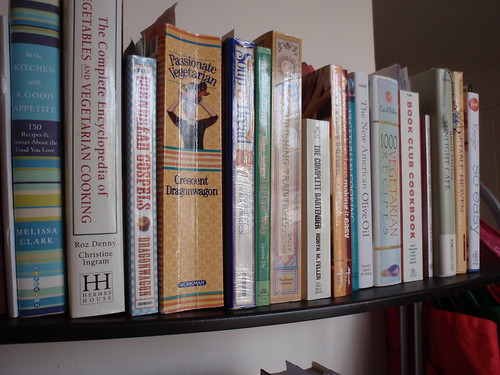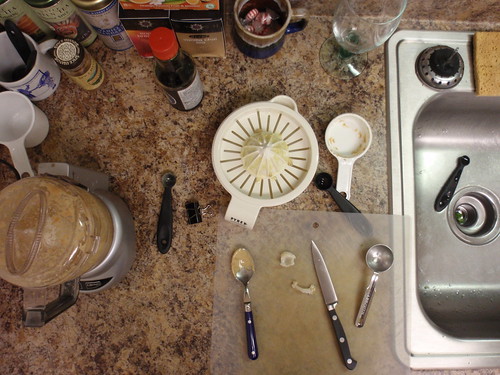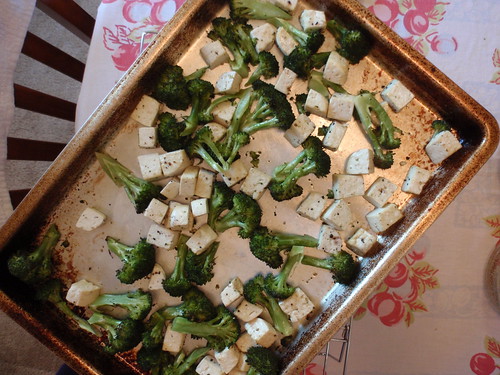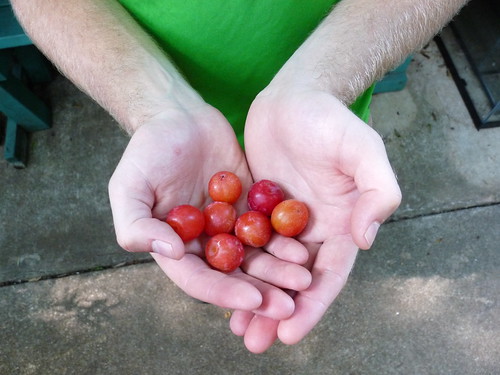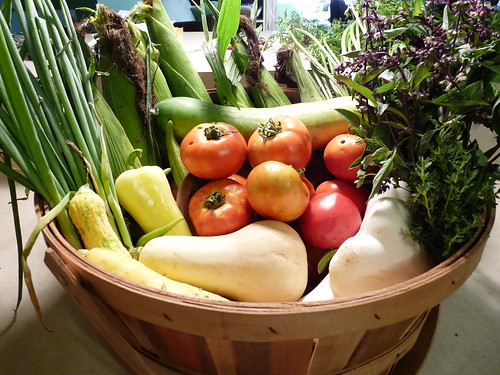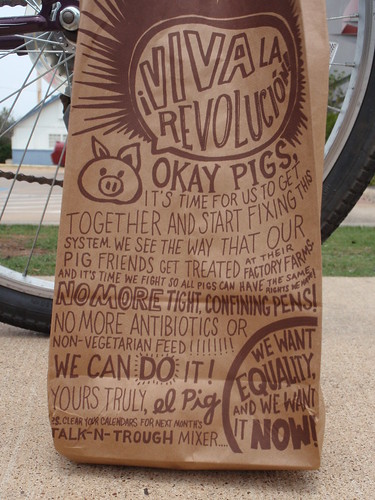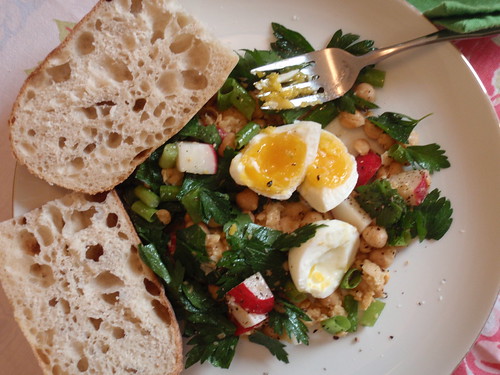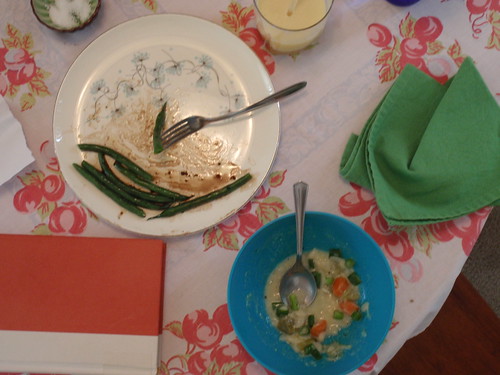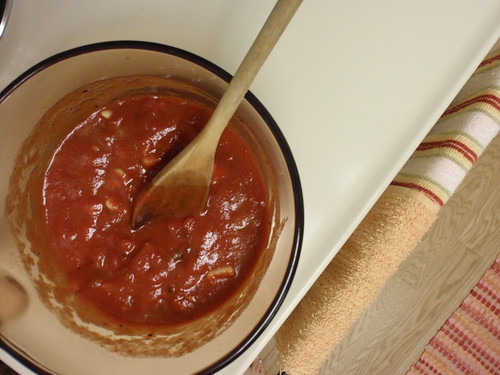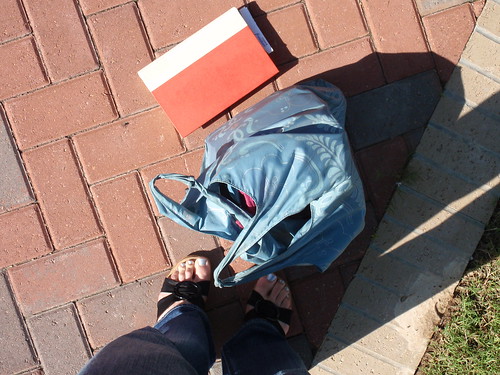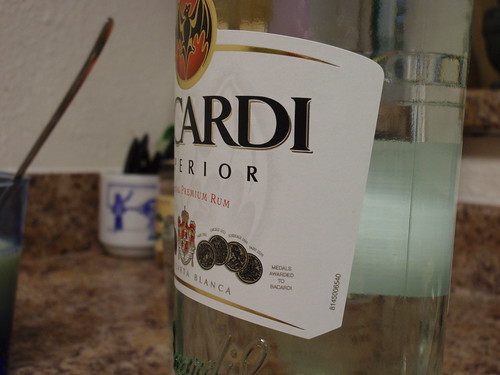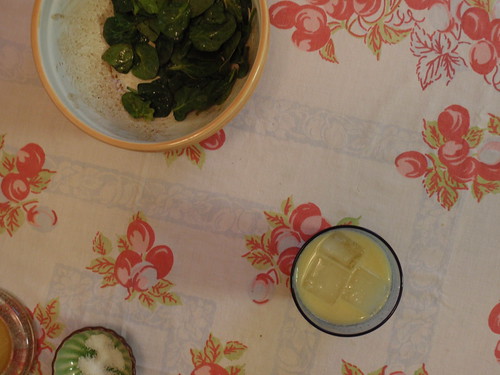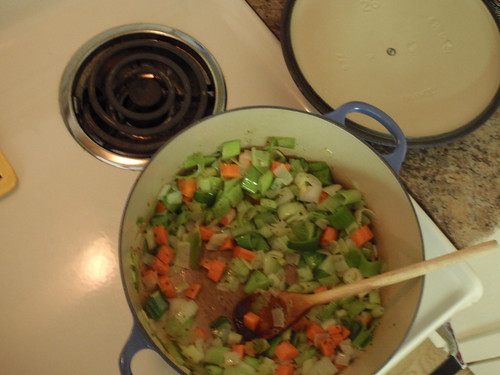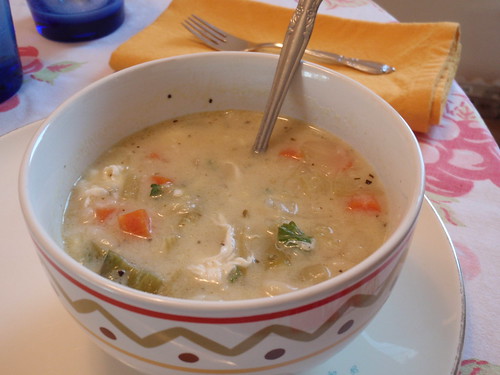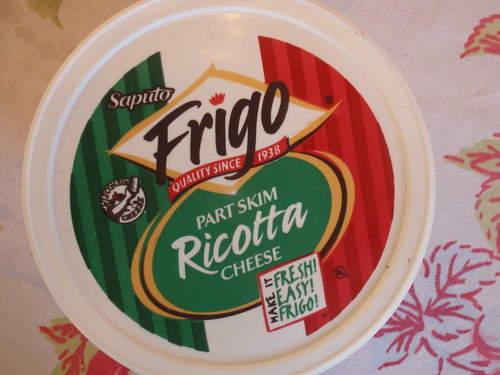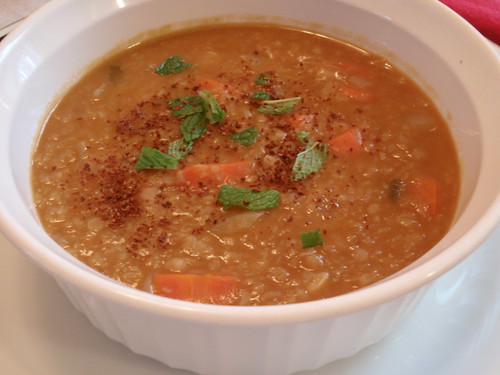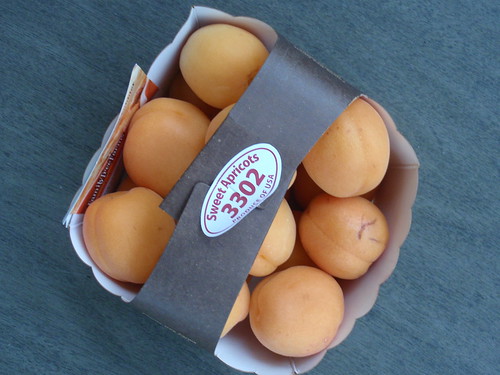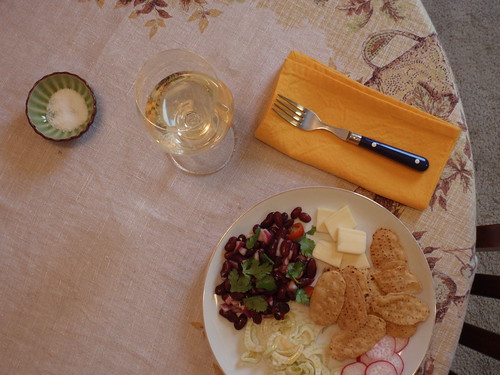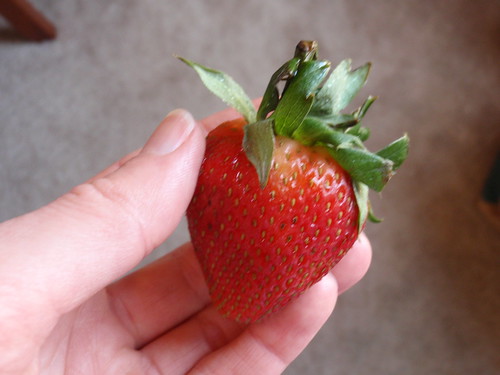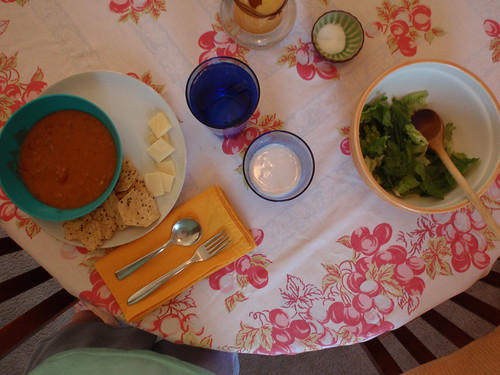I feel like I don’t talk about cookbooks often enough around here. I talk a lot about recipes and the cookbooks from which they came, but for someone who reads cookbooks for pleasure, I should be saying more about my literary-culinary adventures. I read cookbooks the way other people read poetry. It’s a way to let myself sink into the pleasure of someone else’s imagination. A cookbook is, in a way, kitchen fiction, in the sense that it lets you dream about a culinary world that you don’t yet inhabit. I might read, for example, about a chocolate cake doused with whiskey, and I think to myself, Ooh, that sounds kind of naughty. I’ve never made a cake like that before, but I think I’d like to try! Or I might read about a technique for cooking eggs in tomato sauce and think, Oh, wow, I bet I could adapt that to use up leftover tomato soup in the fridge! These discoveries are very exciting, of course, and they’re among the best reasons to be a food-lover. It’s delicious work to explore new culinary horizons.
Today I thought I’d offer a short list of the seminal texts that have taught me about food, especially vegetarianism. For anyone who is thinking about eating less meat and wants a starter library to guide them in their new cooking life, I’d recommend two things. One is to get a subscription to Vegetarian Times. This magazine publishes consistently great recipes that never contain meat, so you don’t have to do the work of trying to adapt a meat-containing recipe to a meatless version (though I, admittedly, love doing just that). Vegetarian Times can get a little preachy and political, which might be good for new vegetarians because I think it’s good to formulate your own food philosophy. Being aware of the issues will make you a more informed consumer and therefore better able to make conscientious decisions about food.
My second recommendation is to buy an amazing vegetarian cookbook. I don’t necessarily mean a book that’s filled with gorgeous pictures of vegetables and looks good on your coffee table, though if that book inspires you to cook healthy meals, then go for it! What I really mean is that you should buy a vegetarian cookbook that can teach you how to cook vegetarian meals every day. Buy a cookbook from which you can learn, one that won’t mind if you splatter soup stock on it or smudge it with buttery fingers. I love all my cookbooks, but there are a few that stand out to me because of how much they taught me. I’m going to force myself to limit this list to three books, my top recommendations for the newbie vegetarian. (But don’t forget that subscription to Vegetarian Times!)
* Passionate Vegetarian by Crescent Dragonwagon. This is, hands down, the book from which I’ve cooked the most recipes. It’s a humongous book with over a thousand recipes, and I know I’ve just barely scratched the surface of what this book and I can do together. This book taught me how to make the best cornbread ever, how to simmer leftover vegetable scraps into a flavorful soup stock, how to choose an eggplant, and how to make Better. More important to me is that this book is my go-to reference book. Whenever I have a question about a vegetable, this is the book I pick up. I also use it as a reference book in more subtle ways, such as how to adapt a particular technique to the recipe I have in my imagination. This book provides solid, practical advice on vegetarian foodstuffs, and it is packed with interesting and delicious recipes. This book feeds my imagination.
* Moosewood Restaurant Cooks at Home by the Moosewood Collective. My friend Ammie recently acquired almost every single book that Moosewood has published, and to say that I’m jealous would be an understatement. She’s a lucky duck, that Ammie, because Moosewood’s cookbooks are awesome. I have two of them, Moosewood Restaurant Cooks at Home and Moosewood Restaurant Book of Desserts, both of which are great. Cooks at Home is a book that inspires me to cook delicious, everyday foods to keep dinner interesting and satisfying. It has a healthy focus, as I think most of the Moosewood books do, but it’s not so healthy that you will feel deprived. It’s not entirely vegetarian, as there is a chapter on seafood, but it’s vegetarian enough that it’s easy to skip past that section. In this book, there is a nice variety of foods inspired by cultures around the world. (Some might call this “ethnic food,” but I hate that term because it’s ridiculous. But I’ll save that rant for another day.) The recipes are solid and easy to make, with flavorful twists that suggest a lot of thought went into these recipes, even the ones that look very easy and basic.
* Mollie Katzen’s Sunlight Cafe by Mollie Katzen. This book is focused on breakfast, but it has taught me about how to eat well any time of day. I learned how to boost the protein in my meals, especially in my breakfasts and sweet snacks, so that even when I’m indulging my sweet tooth, I can eat something that will satisfy my hunger in a healthier, more substantial way. I’ve adapted a number of recipes from this book, including my Mocha Ricotta Muffins and Crunchy Breakfast Granola. Of the three books I’m recommending, this one is the most beautiful, with its lovely paintings and thick, smooth pages.
This book is also useful because I’ve never been one to think that breakfast can only be eaten before noon. This book contains plenty of ideas for savory breakfasts, which make for delightful dinners. I love eggs for supper, but this book also gives ideas for different vegetable preparations as well as tofu and tempeh options. I still need to try Mollie’s Tempeh Hash, as I am eager to find a tempeh preparation that I really, truly love. Tempeh Bacon was good, but I’m still looking for my one true tempeh love.
Dear readers, what are your seminal kitchen texts? Which cookbooks have made you fall in love with cooking all over again?

